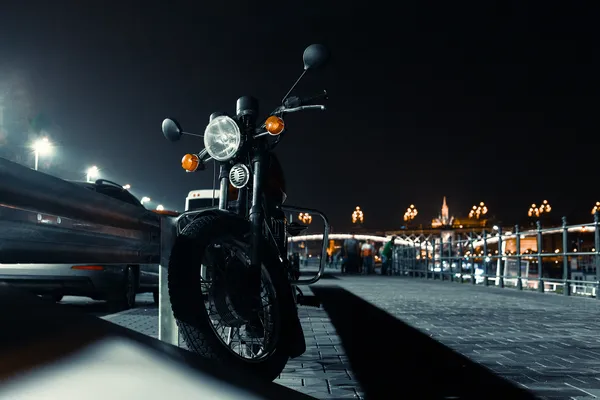
A cross-country motorcycle trip is a dream adventure for many riders. The open road, changing landscapes, and the thrill of long-distance riding create an unforgettable experience. However, proper planning is key to ensuring a smooth, enjoyable, and safe journey. From route selection to gear preparation, here’s everything you need to know before setting out on your two-wheeled adventure.
1. Choose the Right Route
The route you take can make or break your trip. When planning, consider:
Scenic vs. Direct Routes – Do you prefer highways for speed or scenic byways for breathtaking views?
Road Conditions – Check for construction, seasonal road closures, or rough terrain that could slow you down.
Weather Patterns – Some areas are prone to extreme heat, cold, or rain during certain times of the year.
Gas and Food Stops – Rural stretches may have limited fuel stations and restaurants, so plan accordingly.
A good practice is to use apps like Google Maps, Harley-Davidson Ride Planner, or REVER to map out your journey and save locations for fuel, rest areas, and lodging.
2. Prepare Your Motorcycle
Your bike needs to be in top shape for a long-distance ride. Before setting out, make sure to:
Check Tires – Ensure they have good tread and are properly inflated.
Inspect Fluids – Change your oil and check brake fluid, coolant, and transmission fluids.
Test Brakes – Pads and rotors should be in good condition to handle long stretches of riding.
Examine Lights & Electrical – Headlights, taillights, and turn signals should all be working properly.
Secure Luggage – If using saddlebags or a luggage rack, make sure everything is fastened securely to avoid shifting weight while riding.
Scheduling a pre-trip tune-up with a mechanic can help catch any potential issues before they turn into roadside problems.
3. Pack Smart: Gear and Essentials
Packing light is key, but there are a few must-haves for a cross-country motorcycle trip:
Safety & Emergency Gear
First aid kit
Basic motorcycle tool kit
Tire repair kit and portable air compressor
Emergency roadside assistance contact information
Riding Gear
Helmet (DOT-approved)
Riding jacket (weatherproof with armor)
Gloves (summer and waterproof options)
Riding boots
Rain gear
Personal Essentials
License, registration, and insurance
Spare motorcycle keys
Sunglasses and sunscreen
Hydration pack or reusable water bottle
Small snacks for long stretches
A good rule of thumb: pack only what you need and avoid overloading your bike, as excess weight can affect handling.
4. Plan for Weather and Road Conditions
Mother Nature can be unpredictable, and the weather can change dramatically across different regions. Before you ride:
Check the forecast for all the states and regions you’ll be passing through.
Dress in layers to stay comfortable in changing temperatures.
Carry rain gear even if there’s no rain in the forecast—it’s always better to be prepared.
Avoid night riding in unfamiliar areas to reduce risks from wildlife, poor visibility, and fatigue.
If you find yourself in extreme conditions (heavy rain, high winds, or extreme heat), it’s best to pull over and wait it out rather than push through dangerous situations.
5. Know Where You’ll Sleep
Whether you prefer hotels, campgrounds, or staying with friends along the way, plan your accommodations in advance.
Hotels/Motels – Use booking apps like Airbnb, Hotels.com, or Booking.com to find rider-friendly places with secure parking.
Camping – National parks and campgrounds provide scenic overnight stops, but be sure to check reservation requirements.
Motorcycle Lodging – Some B&Bs and motels cater specifically to motorcyclists, offering bike-friendly parking and amenities.
Booking at least a few nights in advance can give you peace of mind, especially in high-traffic areas during peak travel seasons.
6. Budgeting for Your Trip
A cross-country trip can be as budget-friendly or luxurious as you want. Consider:
Fuel Costs – Calculate estimated mileage and gas prices along your route.
Lodging – Campgrounds and budget motels cost less than hotels.
Food – Dining out daily adds up; consider packing snacks or stopping at grocery stores for quick meals.
Unexpected Costs – Set aside an emergency fund for breakdowns or other surprises.
Using apps like GasBuddy can help find the cheapest fuel stops along your journey, saving you money over long distances.
7. Ride Smart and Stay Safe
Safety is the most important aspect of a long-distance trip. Keep these tips in mind:
Take Breaks – Stop every 100-150 miles to stretch and rest.
Stay Hydrated – Dehydration can cause fatigue, so drink plenty of water.
Watch for Fatigue – If you feel tired, pull over and rest. Riding while fatigued can be just as dangerous as riding under the influence.
Stay Visible – Wear bright gear and use reflective strips to increase visibility, especially at dusk or dawn.
Trust Your Instincts – If something feels off, whether it’s a road condition, a person, or a situation, trust your gut and make smart choices.
A safe rider is a smart rider, and keeping safety a priority will make your trip far more enjoyable.
Final Thoughts
A cross-country motorcycle trip is an adventure of a lifetime. With careful planning, the right gear, and a flexible mindset, you’ll be ready to tackle the open road and create unforgettable memories.
What’s your dream cross-country route? Share in the comments below!







